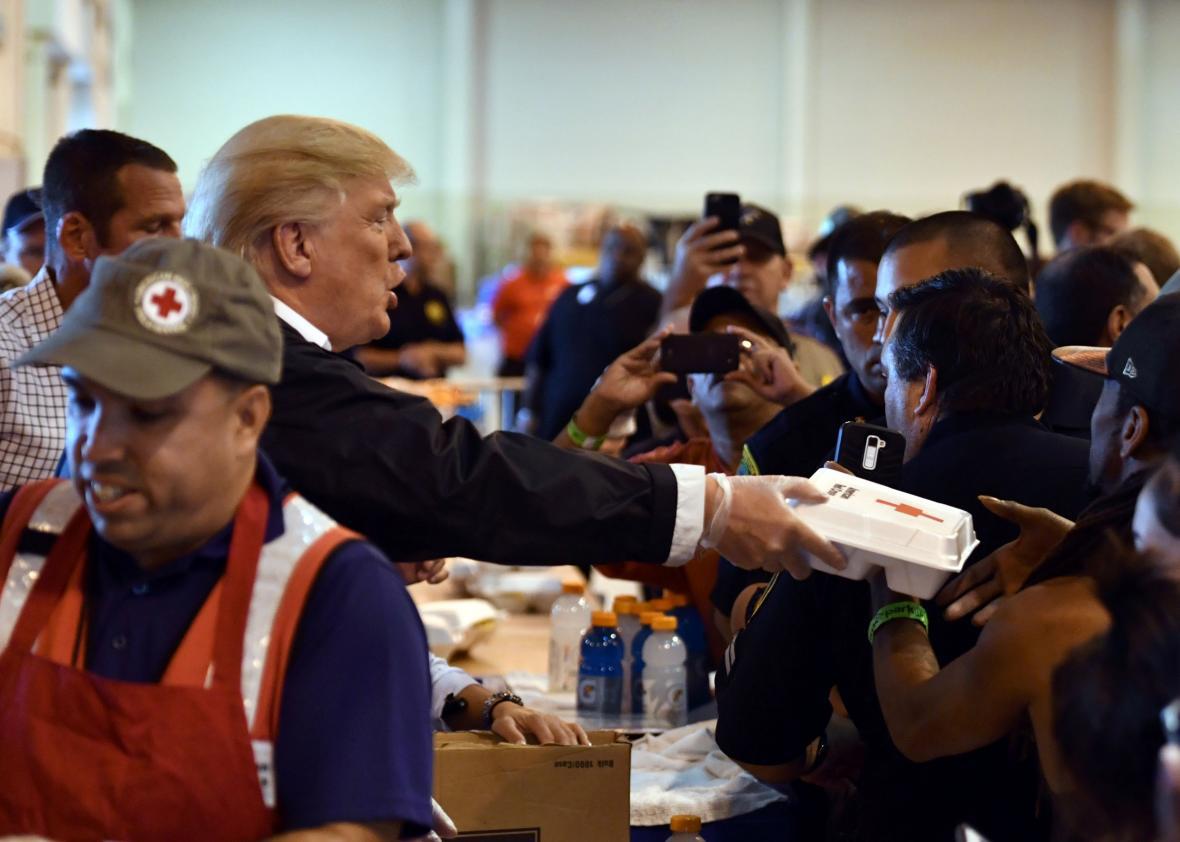President Trump went down to Texas for the second time in less than a week on Saturday and took an entirely different approach, meeting directly with victims of Hurricane Harvey after he was criticized for keeping them at arm’s length during his Tuesday visit. This time he kissed children, shook hands, snapped selfies, passed out meals, and talked to people who had been directly affected by the storm. He also praised the recovery efforts. “It’s been done very efficiently, very well,” Trump said of the recovery. “We’re very happy with the way everything’s going. Lot of love.”
The president seemed to be trying his hardest to put on the empathizer-in-chief hat and said that the people he met on the ground “were just happy.” He then went even further and suggested there was some sort of silver lining to the disaster that has flooded the country’s fourth most-populous city. “As tough as this was, it’s been a wonderful thing. I think even for the country to watch and for the world to watch. It’s been beautiful,” the president told reporters. “Have a good time everybody, I’m going to be doing a little help over here.” He didn’t mention the dead.
Trump’s visit to Texas, and later to Louisiana, came a day after his administration formally asked Congress for $7.85 billion in federal funds as part of a $14.5 billion plan that is likely to be just the first part of an aid package that could total as much as $100 billion. Trump expressed optimism that getting the relief money to the affected areas would be a “quick process.”
While the flooding in Houston has largely receded, other parts of the state remained underwater. Some areas struggled to restore drinking water service to residents as people waited in lines that often stretched for more than a mile to get bottled water. The Associated Press reported Saturday that federal officials have yet to inspect several flooded so-called Superfund sites, which are some of the country’s most contaminated places.
A total of 44 deaths have been attributed to the storm while an estimated 100,000 houses were destroyed. The death toll is still likely to rise.
